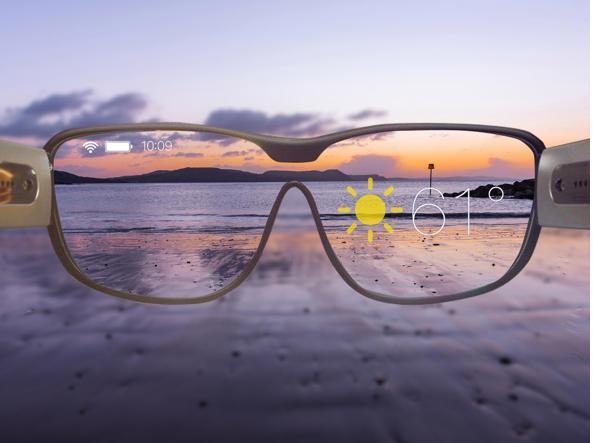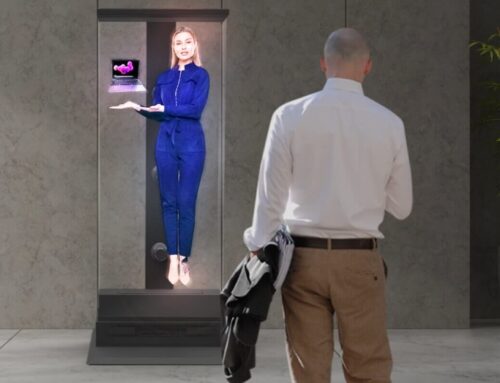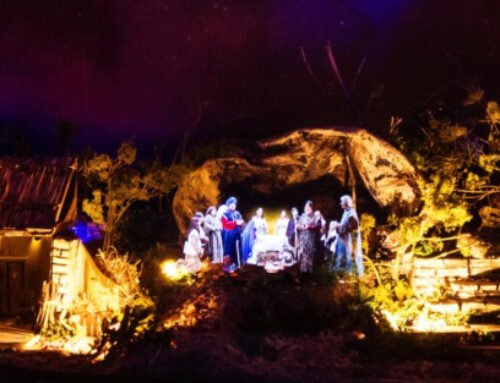On the road and in the car with the new Apple visor: the most absurd scenes paint a dystopian future
On Friday, Feb. 2, 2024, Apple officially put its Vision Pro, a virtual and augmented reality visor, on sale.Wearing it, one can superimpose virtual environments on top of reality, thanks to 12 external cameras that capture and transmit the surrounding environment in real time. This technology, called “pass-through,” (already found on many other visors) allows the Vision Pro to be used at any time.
On the Web we have really seen all kinds of things, people wearing the visor while walking down the street, people wearing the visor on the subway, and people using it on the train on their way to work. In another video, a person wearing the Vision Pro is filmed in a Tesla: he occasionally abandons the steering wheel to type text on a virtual keyboard and perform other tasks with his hands. The Vision Pro in fact has sensors (like many other visors) that track the movement of the wearer’s head and hands so that natural interaction with virtual objects can take place.
Apple will lower the price of Vision Pro by removing user eye playback
The “low cost” model of the visor will eliminate eyesight technology to file down the final cost
PHOTOGRAPH: APPLE
There is one certainty now established about Apple’s second visor namely its more affordable price than the model that will mark the official debut of the new line in early 2024.
Limiting the cost will inevitably require eliminating a few components and lowering the claims a bit, and so the number one suspect for the cut seems to be the eyesight system, the technology that allows the eyes of the wearer to show the eyes of those around them. Doing away with some cameras and sensors as well and aiming for a less refined body could thus bring it down from $3499 to about $2,000.
Eyesight technology is one of Vision Pro ‘s flagships because it seeks to break down the barrier between the wearer of the visor and their surroundings by showing the eyes through an external oled display that communicates with internal cameras. A solution that required no small amount of engineering effort and contributed to the final cost of the gadget, but is ultimately designed to avoid social isolation of the user without bringing real benefits to the direct experience.
This is why Apple is reportedly considering eliminating it for the second version of the visor, which at this point could also be called Vision without Pro, with a more spartan model that is closer to other devices in the segment.
According to Bloomberg‘s Mark Gurman, the inexpensive Apple visor could look a little less refined in the body, with the final price tag likely to be in the $1,500 to $2,500 range.
All other components such as the three-dimensional camera and also the automatic interpupillary distance (IPD) adjustment as well as the sensors used to monitor hand movement so that movements and gestures can be turned into input should remain in place. The release of Apple’s second visor still seems far off in time, current estimates speak of the second half of 2025, when it will be well understood whether the first Vision Pro model will have achieved good success or proved to be a flop.
Apple Vision Pro official at WWDC 2023: its first AR visor |
27 Feb TrendForce’s forecast
Apple Vision Pro is official at WWDC 2023: Tim Cook himself unveiled it as the “One More Thing” on the heels of the conference’s opening event (follow the official live stream from this page!). Cook presented it as the beginning of the era of “spatial computing,” and a project that has been in gestation for several years.
To the eye it looks a bit like a rather thick ski mask, we might say. It is possible to interact with it through voice and hands: a Digital Crown comparable to that of the Apple Watch is observed in the presentation video. Apparently there is at least one cable for the battery pack.
Note that, as had been expected, the visor is “blind,” but it mimics the user’s eyes to the outside world: the technology has been called EyeSight. At least four cameras are observed on the bottom of the screen (two in each eye).
Apple has of course designed visionOS, a completely new interface dedicated to this particular form factor, introducing some rather interesting new features compared to what we have seen so far thanks to competitors such as Meta or HTC. For example, Apple says that as soon as you put on the visor, the first thing you observe is the external environment; the system then populates all its own apps, which have their own dimensions and react to light (cast shadows, for example). There will also be an App Store here; early partners include Adobe and Microsoft for Office/365 (specifically mentioned Word, Excel, and Teams).
Windows and apps can be moved to the “virtual” environment (in the sense of the real environment, but projected into the interface). “Project your apps into the real world,” says Apple. Digital Crown allows you to make the transition from the real world to a completely virtual one. Windows will be able to be placed three-dimensionally–a concept was even shown in which a three-dimensional object can be extracted from an email attachment or message and “placed” virtually on one’s desk.
It is interesting that Apple has decided not to produce a dedicated physical controller: it is all done through eyes and hands. Just, for example, look at a search field and start dictating the query. However, via Bluetooth, it will be able to be interfaced with a number of other devices, including Macs (but keyboards, mice and trackpads are also specifically mentioned). Will there finally be no more problems of insufficient monitors for those doing video editing or audio production?
Apple demonstrated some interesting experiences and features, not only proprietary (e.g., the 3D Camera will allow the creation of 180-degree three-dimensional videos and photos with spatial audio; there is a dedicated physical button on the chassis/mount) but also from partners. In particular, Bob Iger, CEO of Disney, explained the potential of technology applied to entertainment-from movies to sports to documentaries. Disney Plus will be available on Vision Pro from day one -at this point, Apple announced that also from day one the viewer will also be compatible with the more than 100 Apple Arcade titles.
Apple spoke in great detail about the technological challenges ( more than 5,000 patents are mentioned) it faced in the material realization of the device. The visor has a super lightweight frame and a modular setup-for example, the mask padding is removable and will come in various shapes, and it is also very soft to fit ideally to one’s face. The back band is removable and is widely adjustable-Apple suggests there will be multiple models in the future. For those in need of corrective lenses, Apple has partnered withZeiss. The battery, as we said, is external: the claimed battery life is two hours. Spatial audio is handled by two drivers on each side, individually amplified; the listening experience is customized to the user’s head conformation.
According to Apple, the internal display (or rather, displays, one in each eye) is made with MicroOLED technology. Overall, the two displays have 23 million pixels; the pixels are just 0.75 microns in size, 1/4 the size of an iPhone display. The device is run by Apple Silicon-specifically an M2 working in tandem with an all-new chip, called R1, that interprets all signals from the array of 12 cameras, 6 microphones, and 5 sensors (in just 12 milliseconds, Apple explains).
The App Store on Vision Pro
The external display, on the other hand, is a curved OLED that uses a system of lenses and reflections to ensure proper perspective for all who view the user. Below the external display, there are (on each side) a side camera, an IR illuminator, a camera pointing downward (for hand tracking), a TrueDepth camera, and a main camera. In the center, however, there is a single LiDAR scanner.
Apple has invented a new biometric authentication system: it is called Optic ID, basically an iris scanner. Apple promises that where you look will remain private information that cannot be tracked by manufacturers.





